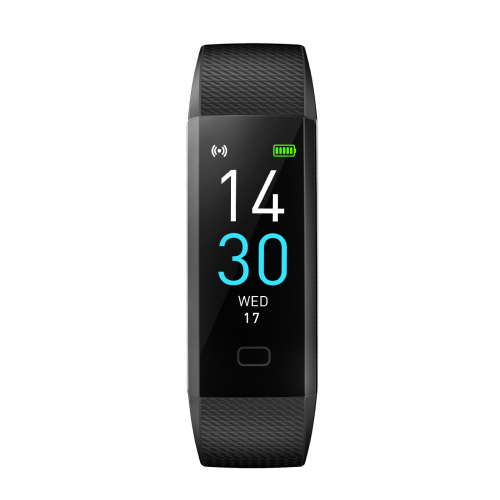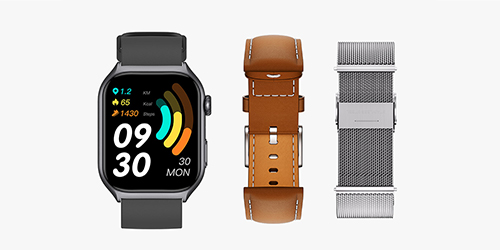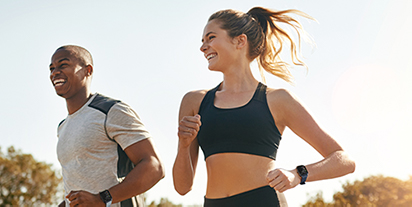When it comes to weight loss, choosing the right exercise can make a significant difference. Walking and running are two of the most popular options, but which one is more effective for burning calories?
According to Paul D. Thompson, M.D., chief of cardiology at Hartford Hospital and professor of medicine and preventive cardiology at the University of Connecticut, “The key difference between running and walking is how many calories you are burning—not per mile, but per minute of exercise”.[1]
Running generally burns more calories than walking. For example, a person weighing 70 kg (about 154 lbs) burns about 372 calories per hour walking at 6.4 km/h (4 mph). In contrast, the same person running at 8 km/h (5 mph) burns over 60% more calories, totaling about 606 calories per hour.
“Running is a less efficient movement, and it’s more demanding on the body, so it burns more calories per minute,” Thompson says. “But if you’ve got the time to walk long enough to burn the equivalent calories, then walking is fine.”[1]
Factors Influence Calorie Burn
The number of calories burned is closely related to your heart rate. When you exercise, your heart beats faster to send more oxygen to your muscles. This needs more energy, which comes from burning calories. So, the harder your heart works, the more calories you burn.
High-intensity exercises like running, which elevate your heart rate, usually burn more calories than low-intensity exercises like walking. But factors like age, weight, fitness level, and exercise duration also affect the number of calories burned.
- Body Weight: Heavier people burn more calories because they use more energy to move.
- Age: As people age, they burn fewer calories due to a slower metabolism and loss of muscle mass.
- Daily Activity: More daily movement can burn more calories throughout the day.
- Exercise Intensity: Higher intensity exercises burn more calories in less time.
- Exercise Duration: Longer workouts usually burn more calories. So if you want to burn the same calories as running, you need to walk longer.
Ways to Measure Calories Burned
Knowing how many calories you burn can provide valuable insights into your progress, helping you adjust your workouts to meet your weight loss goals. Here are some simple ways to measure calories burned:
MET Value Charts
Metabolic Equivalent of Task (MET) values provide estimates of calories burned per minute for various activities based on your weight. You can find these charts online and calculate them yourself. This method requires more effort, but can be helpful if you prefer a hands-on approach.
Heart Rate Monitors
You can use a heart rate monitor, such as the Polar Heart Rate Monitor Chest Strap, to help you accurately measure the calories you burn, especially during vigorous exercise. These monitors track your heart rate in real-time, so you can keep yourself in your target zone for optimal calorie burning.
The ideal heart rate range for burning calories is 50-85% of your maximum heart rate, with moderate exercise at 50-70% and vigorous exercise at 70-85%. To calculate your maximum heart rate, subtract your age from 220. For example, if you’re 30 years old, your maximum heart rate is 190 bpm and your target range is between 95 and 162 bpm.
Fitness Tracker and Smart Watch
Smartwatches and fitness bands can track your daily activities such as calories, distance and steps using your heart rate, activity level and other personal metrics. Some of them can also track your calorie burn in real time using the sports features. These smart wearable devices are convenient and often have additional features such as pedometer, MET, heart rate and SpO2 monitoring, sleep tracking and exercise logging.
Syncing your fitness data collected by smartwatch and fitness tracker with fitness apps, like Runmefit and Strava, will give you a more comprehensive overview and better data management. You can also get long-term fitness tracking reports of your plan, so you can adjust your routine and recovery plan in time and learn more about your physical health status.
Online Calculators
There are various online calculators to help estimate calorie burn based on your weight, activity type, and duration. While not as precise as professional tools, they can provide a good general idea. They are easy to use and provide quick estimates without any special equipment.
Tips for Burn More Calories
While Walking:
- Walk Faster: Increase your walking speed to increase intensity.
- Add Hills: Walking uphill or on an incline burns more calories than walking on flat ground.
- Use Weights: Carry light hand weights or wear a weighted vest to increase energy expenditure.
- Interval Walking: Alternate between fast walking and a slower pace to boost calorie burn.
- Engage Your Arms: Swing your arms vigorously to get your heart rate up.
While Running:
- Increase Distance: Gradually increase your running distance to extend your workout.
- Add Sprints: Add short sprints into your runs to get your heart rate up.
- Run on Different Terrains: Running on trails, sand, or hills to increase the intensity.
- Use Proper Form: Maintain good running form to improve efficiency.
- Interval Running: Alternate between sprinting and jogging to maximize calorie burn.
By using these tips while walking or running, you can enhance your workout, burn more calories, and achieve your fitness goals more effectively.
Conclusion
In summary, consider your fitness level and health conditions when choosing between walking and running. If you’re new to exercise or have joint issues, walking might be a better start. Conversely, if you’re looking for a more intense workout and have no joint problems, running could be more effective for burning calories and improving fitness.
However, if your main goal is to lose weight, neither running nor walking alone will do it. They are great ways to keep you motivated and active. The key is to find an exercise you enjoy and can stick with consistently. So, no matter what exercise you choose, remember to stay active and enjoy your exercise routine!
























